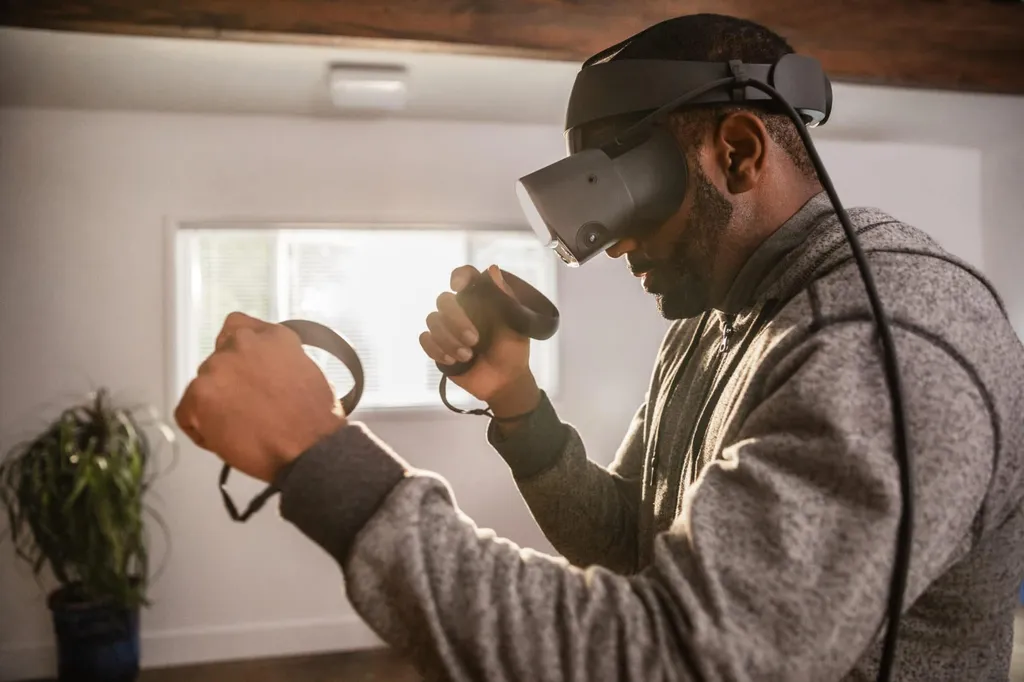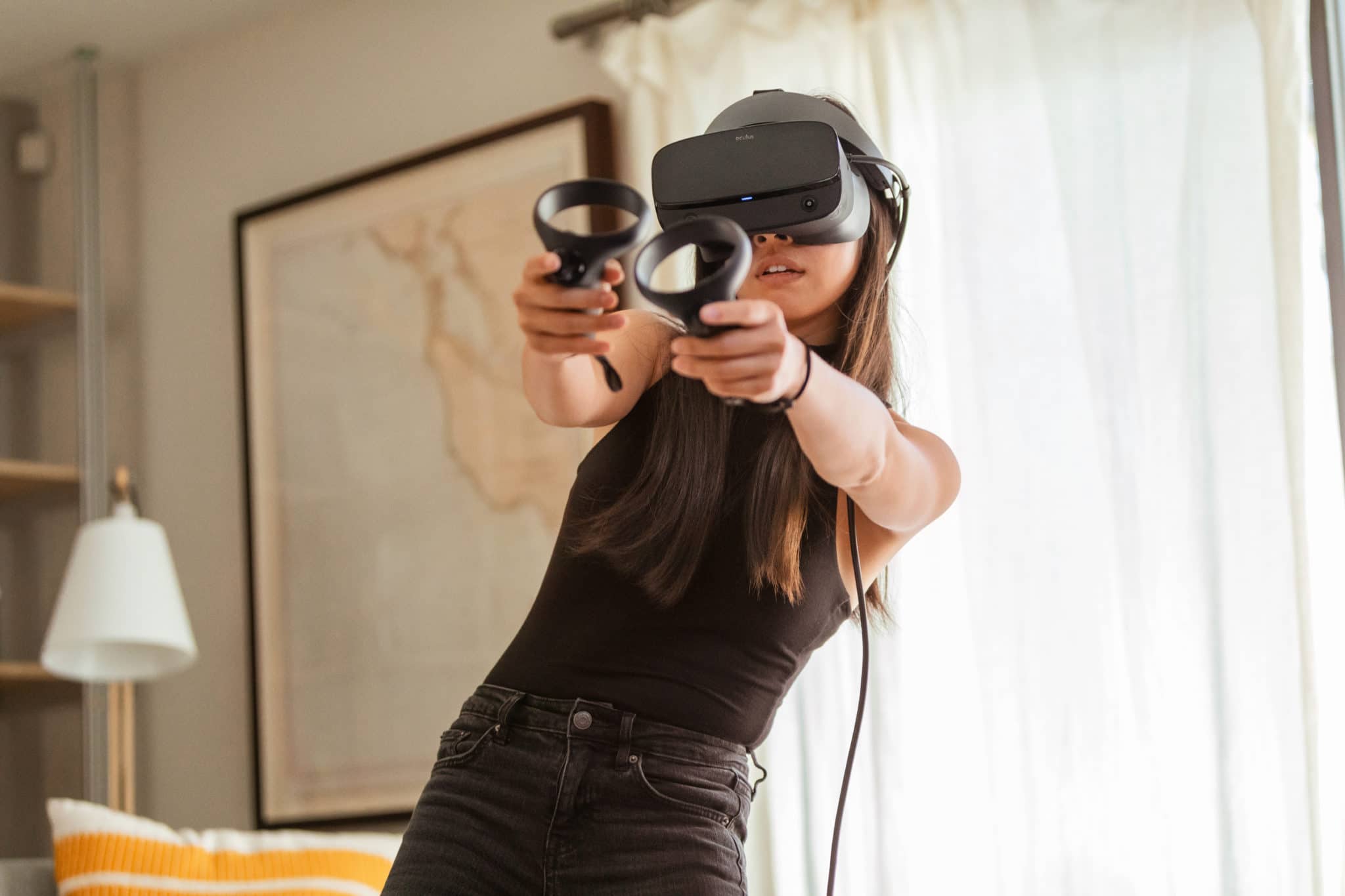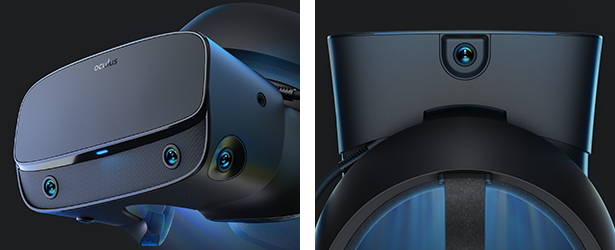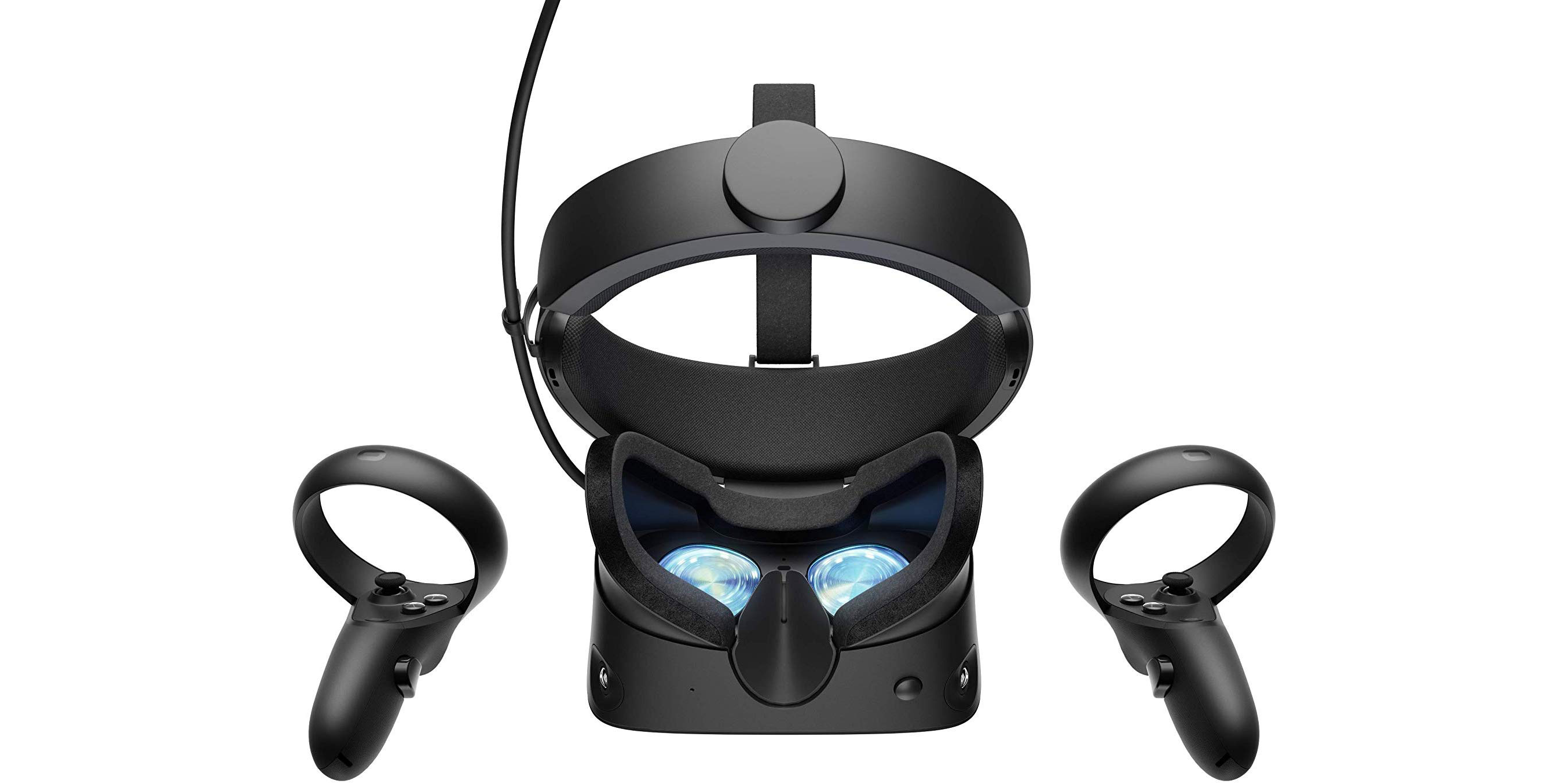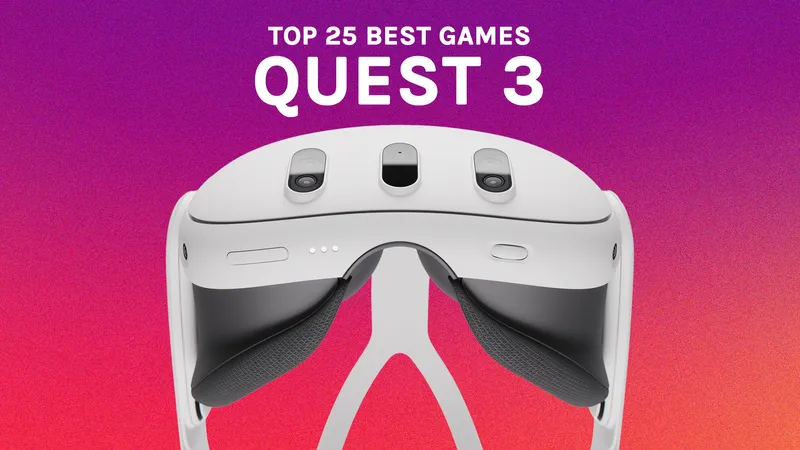This review was originally published on April 30, 2019.
Facebook and Valve support VR for different reasons.
Valve’s Steam storefront is the dominant digital distribution store on personal computers. Virtual reality creates new markets for content which Valve can sell to PC owners via Steam.
Facebook’s relationship to people is reliant on platforms controlled by other companies like Google, Apple, and Microsoft. VR offers an opportunity for Mark Zuckerberg and Facebook to loosen its dependence on those companies.
I start there in my Rift S review for a few reasons.
First, Facebook set its embargo for Rift S reviews at 10:30 AM Pacific on April 30 — mid-way through its keynote at the F8 developers conference which started at 10 AM.
About two hours before my hands-on time with the Valve Index HMD last week, a representative from Valve emailed me to say the company shifted its embargo time from May 1 to April 30 at 10 AM Pacific. Any sense of rivalry between these companies is not imaginary. It is fact.
Second, it is apparent Facebook prioritized one consideration in its design of the follow-up to 2016’s Oculus Rift. Above all else, Rift S makes it easier for new VR buyers to sign up for an Oculus account, set up their headset, and get into a virtual world delivered by Facebook.
Easier Setup And Lower Cost
Before Rift S arrived at my home on Friday last week I disconnected three USB cords from my PC.
Each cord ran to a sensor for tracking movement of the original Rift and its Touch controllers. At its discontinuation this month, Rift cost more than $400 for a complete “room-scale” system if you wanted all three sensors. For me, that meant running two of the three USB cords taped to my ceiling with the sensors mounted high on my walls so they could spot movement in almost any direction from the outside-in.
Insight Tracking
Rift S moves to “inside-out” tracking via five cameras on the headset itself to erase the need for those extra USB ports on the PC. This is the same “Insight” system deployed on Oculus Quest (via four cameras on that headset) and in my experience setting up Guardian boundaries works just as quickly and smoothly across both systems.
I spent the last three years setting up Oculus Rift sensors in dozens of configurations, buying USB extension cords, drilling holes in walls and, worst of all, dealing with trial-and-error PC issues across desktops and laptops as a result of hooking up three sensors and a VR headset.
I don’t think I can overstate how much of a delight the out-of-box setup experience is with Rift S in comparison to the original. You’re still limited to a tracked area tethered by a cord to your PC, although now it’s five meters instead of just four. Thankfully, now it’s no longer a huge inconvenience to simply just move the VR play area by a few feet. And, if you wanted to go portable, the inside-out tracking system is more friendly to backpack PCs.
The Insight system makes it easier to use Rift S with laptops, lowers the minimum PC specification overall, and also erases the considerable amount of time needed to mount the sensors and set up the tracking in the Oculus software. And the cost? A whole “room-scale” Rift S system starts at $399 with a pathway over the lifetime of the headset made by Lenovo to lower that price much more than Rift ever could.
By most (but not all) measures, Rift S widens the door to PC VR to accommodate a larger set of PC customers than the original released in 2016.
Cross-Compatibility
The next priority apparent in the Rift S design is cross-compatibility with other Oculus content and hardware.
Rift S is a bridge between the original Rift and its considerable library of PC-based content and the new Oculus Quest standalone headset, which is Facebook’s true play for mainstream users. For example, both Quest and Rift S use identical second-generation Touch controllers.
I found it relatively easy in my testing on Rift S to accidentally hit the Oculus button on these controllers. That can be fixed with software to ignore those presses during fast movement. Unfortunately, though, I also found the battery compartment on the new Touch controllers came loose in my hand easily enough to ruin playthroughs in games like Beat Saber.
Competitive Gaming?
On the Rift S HMD two sensors point to the sides, another looks up on the top of the device, and two more point straight-forward. For those counting, that’s one more sensor than Quest and three more than the many Microsoft headsets, including the new HP Reverb. We haven’t had enough access to hardware like Valve Index or HP Reverb to make meaningful comparisons to the overall tracking experience on these new 2019 VR headsets yet. Anecdotally, and with the video below, you can see the same general — if slightly reduced — occlusion issues with Rift S as seen with Insight on Quest.
Some of the interactions in competitive zero-gravity games Echo Arena and Echo Combat involve doing things without looking at your hands, like grabbing onto walls and objects to your side or behind you. In Rift S, sometimes the grip on the wall would fall away when trying to hold it while turning to do other things. The headset doesn’t release until May 21 so there is still time for Ready at Dawn to improve the experience prior to launch. Will all competitive VR games get updates to account for the differences of Rift S inside-out tracking though? Probably not — so this is something competitive gamers should take into account if these types of interactions are key to your play style.
Visuals
Though my initial impressions of Rift S suggested so-called god rays were gone, after a couple days with the headset it is apparent those visual artifacts are drastically reduced compared with the original Rift — but not completely eliminated. The screen-door effect is dramatically reduced as well, but it is still there and the lenses still catch light in some distracting ways. I prefer the Rift S optical design to both the Vive and Vive Pro as well for the same reasons — reductions in visual artifacts compared with the earlier systems.
The frame rate of the display is reduced from 90 hz to 80 hz from Rift to Rift S, but I can’t say the difference is noticeable. What’s more noticeable, though, is the resolution improvement and overall clarity of the optics. The original Rift used dual OLED panels for a total resolution of 2160×1200. Rift S replaces it with a single LCD panel with a resolution of 2560×1440. To be clear about this — I personally wouldn’t go back to the original Rift (or Vive or Vive Pro) from Rift S for any reason.
One note though — Rift S features software adjustment for interpupillary distance (IPD). Its lenses are fixed at 63.5 mm from one another, which means Facebook says they are “best” for users with IPDs of between 61.5 and 65.5mm. I’m outside that range, I believe, on the high end. No matter if I left the software adjustment at the default or moved it outside the “best” range to 67.5, I didn’t feel like it had a noticeable effect on my visual experience.
With the Valve Index physical adjustment, though, I could move the slider and see millimeter by millimeter the effect on my stereoscopic vision. On Index, IPD adjustment had a dramatic effect on my perception of depth and clarity. Rift S didn’t. I haven’t had enough time with the Index headset, though, to say anything more definitive about these differences.
Sound
Rift S uses an open-ear sound design that incorporates audio into the head strap. This means the audio experience should provide more comfort, generally, compared with any designs which touch the ears. This design should also make it easier to hear things from two realities — while also letting people nearby hear what’s going on in the virtual world. There’s a 3.5 mm headphone jack for folks who want to add headphones for private audio.
Two days before Rift S arrived at my house, I put on Valve Index and let the near-field speakers hover right outside the surface of my ears as I played Beat Saber. This effectively destroyed my first impressions of Beat Saber in Rift S. All I could do in Rift S was remember the things I heard in my Index demo that I couldn’t hear in Facebook’s new PC VR headset. And the Valve design still allowed me to hear things from two realities with the same level of off-ear comfort.
Conclusion
I believe Rift S to be a generally better overall experience than Vive Pro, Vive and the original Rift for only $400. I couldn’t have torn down those original Oculus sensors any faster.
There are notable caveats, though, for people with unusual IPDs or those who spend many hours in one specific virtual world that depends on some behind-the-back gestures which might escape the Insight tracking system. If that’s you, you might wait for developers to further optimize their apps for this new tracking system before upgrading.
Also, when it comes to Rift S vs. Index, or even Rift S versus HP Reverb or Pimax, we can’t make any more definitive recommendations just yet due to lack of significant time with those other pieces of hardware.
Rift S, then, continues the legacy set by its predecessor in accessing the largest and highest quality PC content library available from both Oculus and Steam. The headset won’t work in the dark, which is a bummer, but the convenience of the setup should reduce store returns and smooth out the overall experience of donning a PC VR headset.

